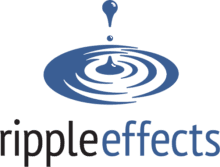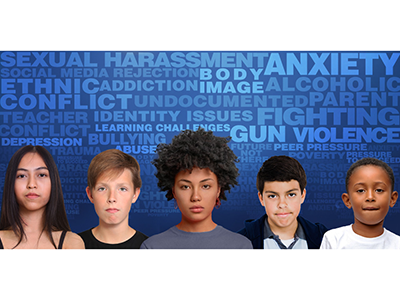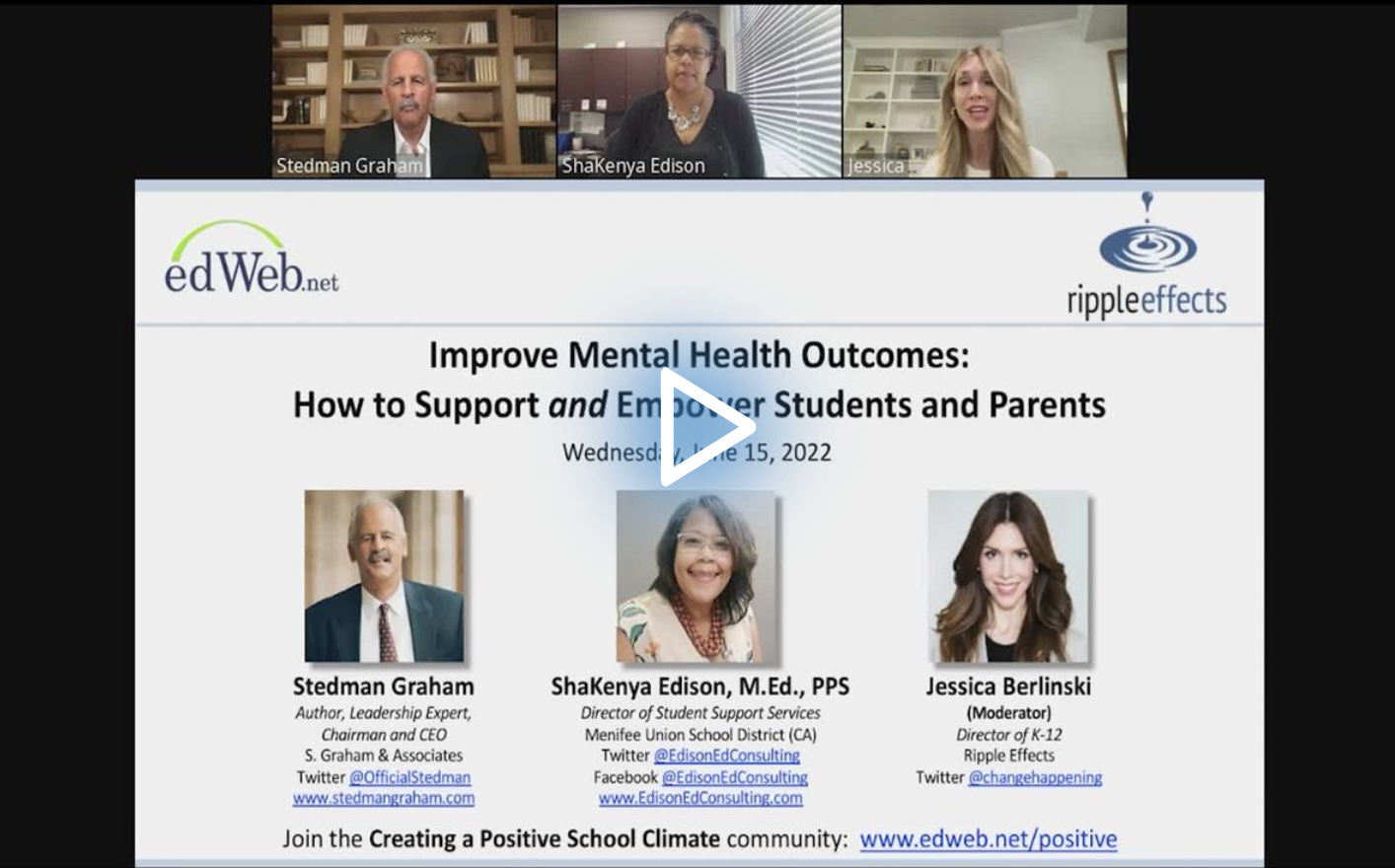Improving Students’ Mental Health Systematically and Individually
Watch the Recording Listen to the Podcast
Today’s students face an unprecedented combination of challenges and issues that can interfere with their well-being and disrupt their learning, but there are also new opportunities to provide districtwide support for their mental health while helping individual students learn to help themselves.
Ways to implement and align school district programs and a personalized approach for each student were discussed during the edLeader Panel, “Improve Mental Health Outcomes: How to Support and Empower Students and Parents.” Featured in the panel were Stedman Graham, author, leadership expert, and Chairman and CEO of S. Graham & Associates, and ShaKenya Edison, M.Ed., PPS, Director of Student Support Services for the Menifee Union School District (CA).
To document the extent of the mental health issues facing students, moderator Jessica Berlinski, Director of K-12 for Ripple Effects, presented data showing that during the pre-pandemic years of 2009 through 2019, there was a 40% increase in persistent sadness or hopelessness among high school students, and there was a 36% increase in serious suicidal ideation.
Then, after the first two years of the pandemic, a global study found that depression and anxiety symptoms had doubled among young people, and emergency room visits for attempted suicide spiked by 31%.
Switching from Problems to Solutions
As a district director of student support services, Edison faced a double challenge during the first years of the pandemic. Not only were students dealing with the multiple unexpected impacts of school closures and changes in family circumstances, but the teachers and other staff members, whose lives were usually more “regulated” than the students’, were trying to cope with similar changes and disruptions. This made it more difficult for the adults to focus on what they needed to know in order to teach and support students effectively.
Her approach was to rethink and reimagine what needed to be done, and then re-equip the “toolboxes” for all staff members, so every district employee the students interacted with could model and teach healthy coping strategies and skills. This included the core competencies of social-emotional learning, such as developing self-awareness, making responsible decisions, and showing empathy for others.
Graham’s approach to mental health predated the pandemic and grew out of his experiences growing up with siblings who had special needs, while he was trying to find out who he was as a person. At first, he didn’t have an awareness of his cognitive abilities and therefore defined himself based on external factors such as how others saw him.
He now recommends reversing this process by beginning to work with young people on finding and improving themselves through the identification of talents, skills, and what makes them happy. Once students have identified themselves in this way, they can begin to self-actualize by applying the education and outside knowledge that is relevant to their continued development, including their abilities to achieve or sustain mental wellness.
Implementing and Aligning Processes
Graham has identified a nine-step process to become a self-directed, lifelong learner, which includes building a vision, creating a plan, and developing a value system. Other key steps are assembling a “dream team” to help each young person achieve his or her goals, and “learning how to learn” in order to use the power of information to empower oneself and continue improving.
For Edison, a systemwide process starts with identifying the results that schools and districts want their students to achieve. In regard to mental health, key outcomes include keeping students well, providing access to systematic support when needed, and enabling students to learn the skills that will help them achieve their goals. Districts also need to identify what they have in place that is working well, where there are gaps, and what should be scaled up.
One crucial aspect of the implementation process is making sure teachers have what they need to keep students in the classroom so that their learning can continue as much as possible without their being sent out of the room for disciplinary issues, counseling, or academic intervention. When using a Multi-Tiered System of Supports, the goal should be to maximize the Tier I support and instruction so there is minimal need for Tier II or Tier III interventions.
The use of techniques such as “mindful minutes” and empathetic listening, combined with small-group instruction focused on academic needs, can help teachers provide more access to the learning, socialization, and other support that occurs within the classroom. This should include a curriculum that has fully integrated social-emotional learning and tools that deliver tailored intervention for a few students while the rest of the class is learning in other ways.
Knowing that teachers can’t do all this alone, Edison recommends engaging community partners in the process along with all district staff, so students have access to multiple adults who recognize them and can provide support if needed. This approach includes creating an environment that recognizes the value of students’ abilities to understand themselves, manage their interactions, and advocate for themselves in regard to their education and mental health.
Graham recommends a preventative program that is aligned with this vision but also extends it by supporting students’ abilities to use the internet and other technologies as a way to take charge of their own development and provide themselves with a relevant, supplemental education.
Once students understand themselves and their goals, he sees online access to resources as an equalizer that can enable self-directed students to continue improving themselves and taking full advantage of the opportunities available to them.
Learn more about this edWeb broadcast, “Improve Mental Health Outcomes: How to Support and Empower Students and Parents,” sponsored by Ripple Effects.
Watch the Recording Listen to the Podcast
Join the Community
Creating a Positive School Climate is a free professional learning community that provides all education stakeholders with a place to collaborate on improving the learning environments of our schools to make them safe places for all students to reach their full potential.

Blog post by Robert Low based on this edLeader Panel





Comments are closed.